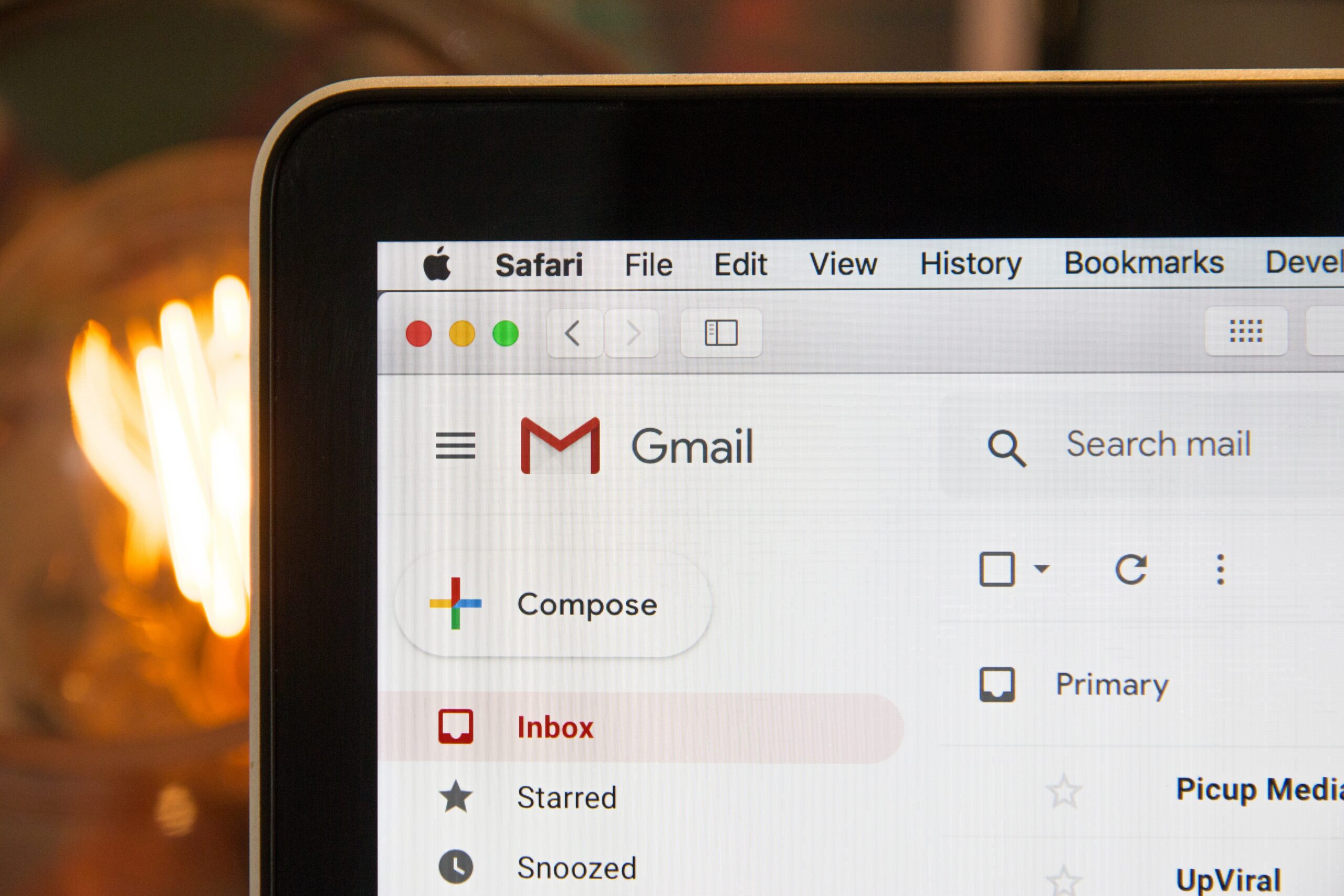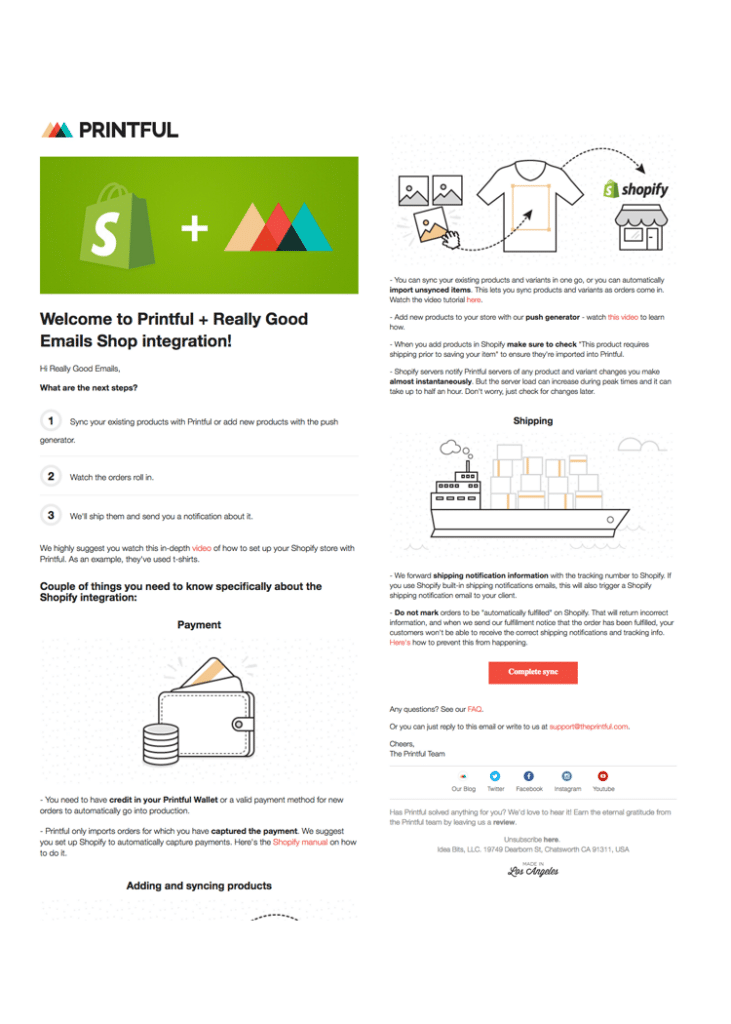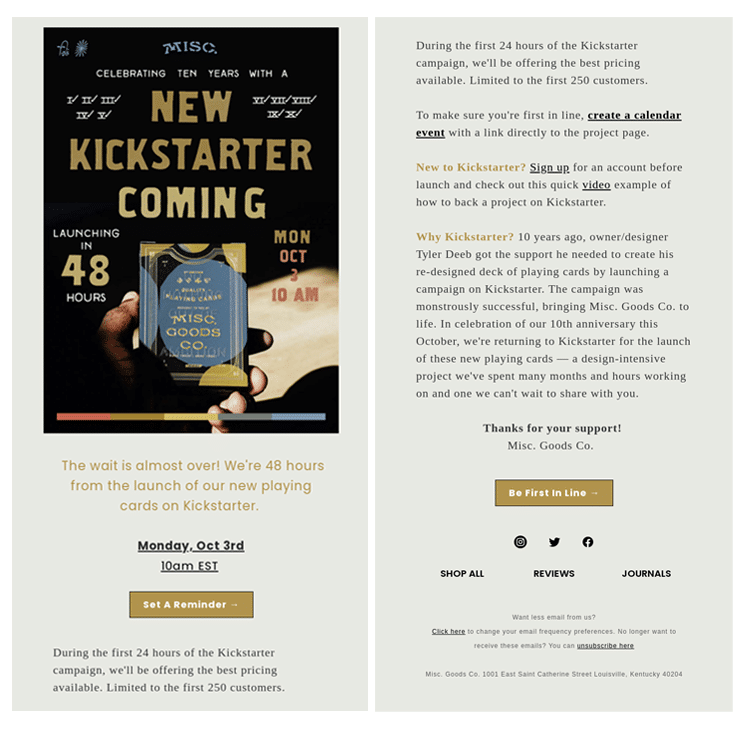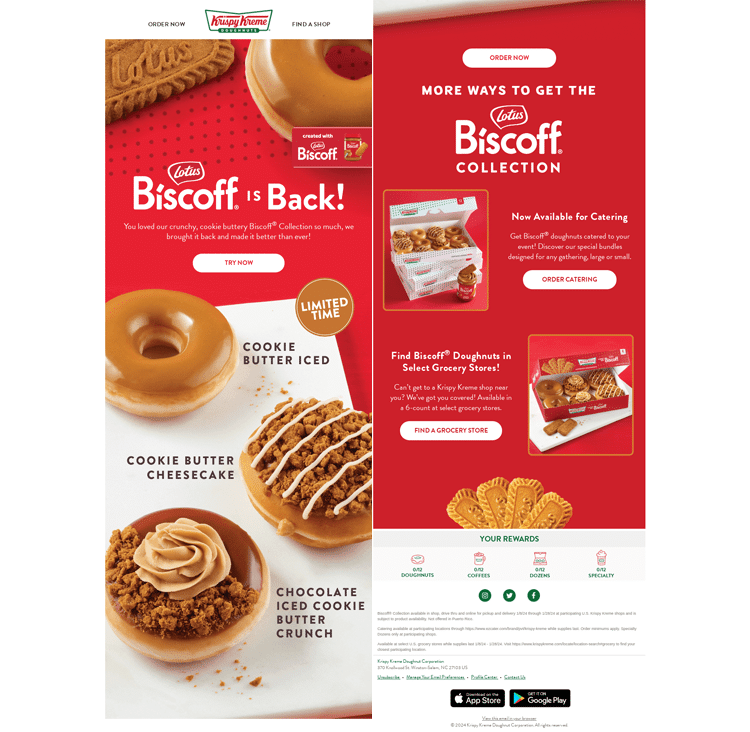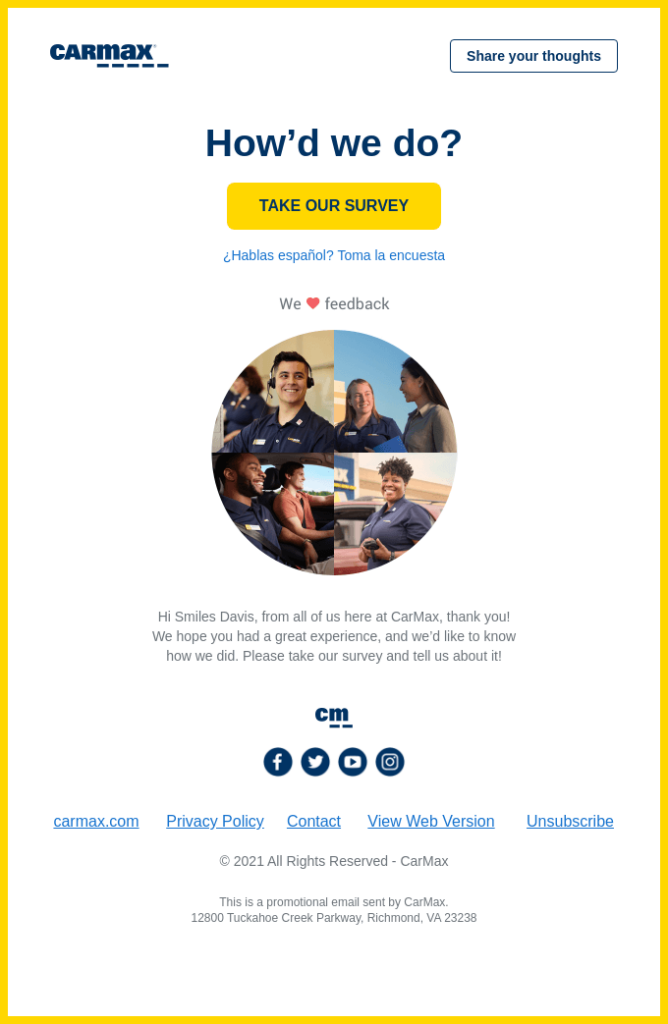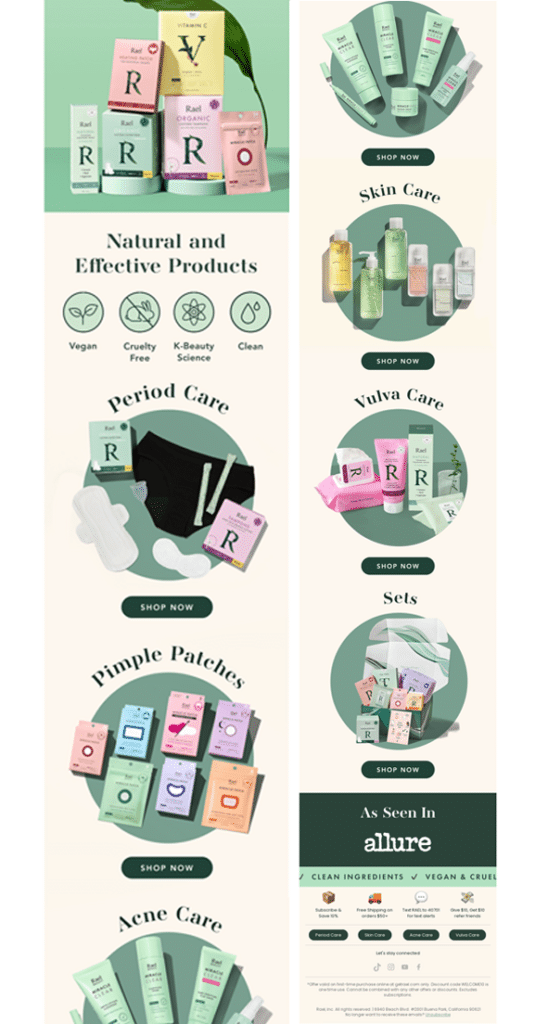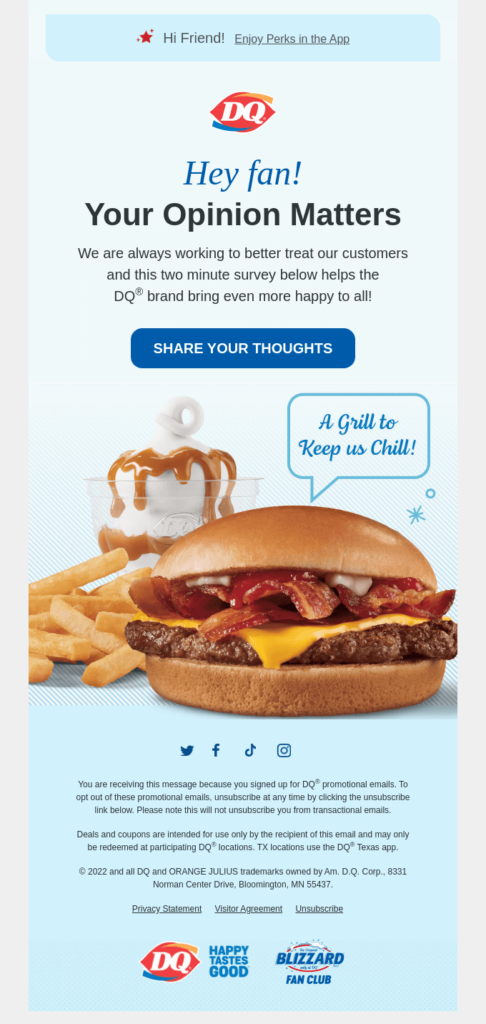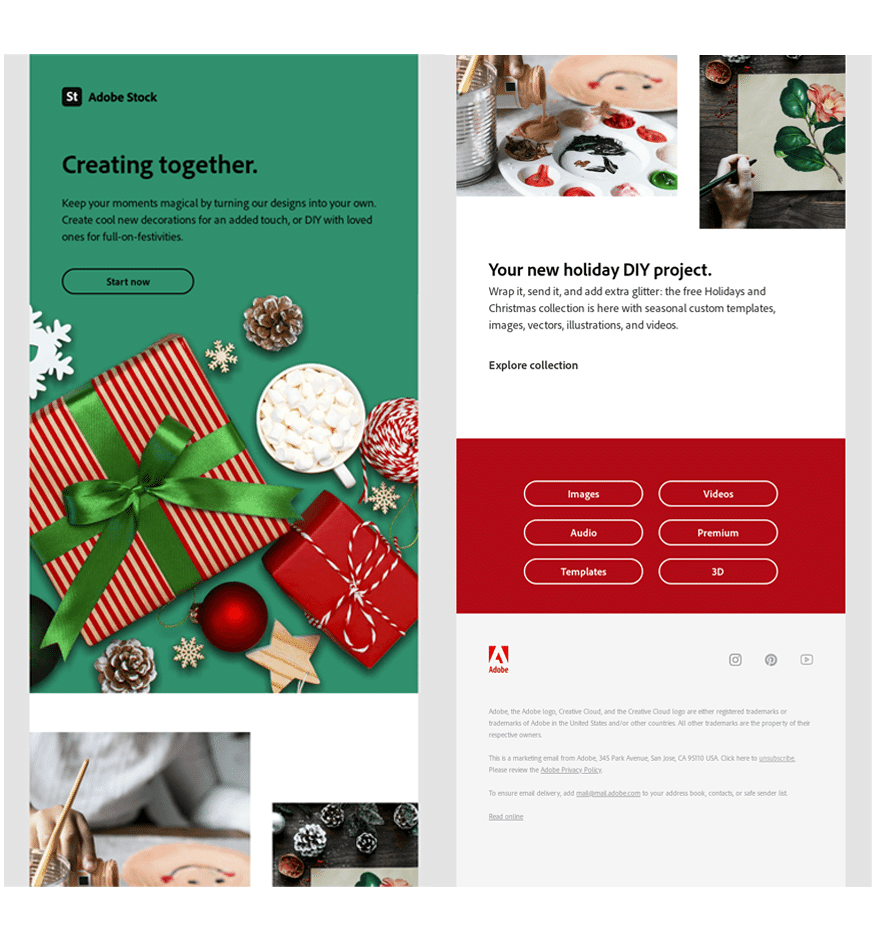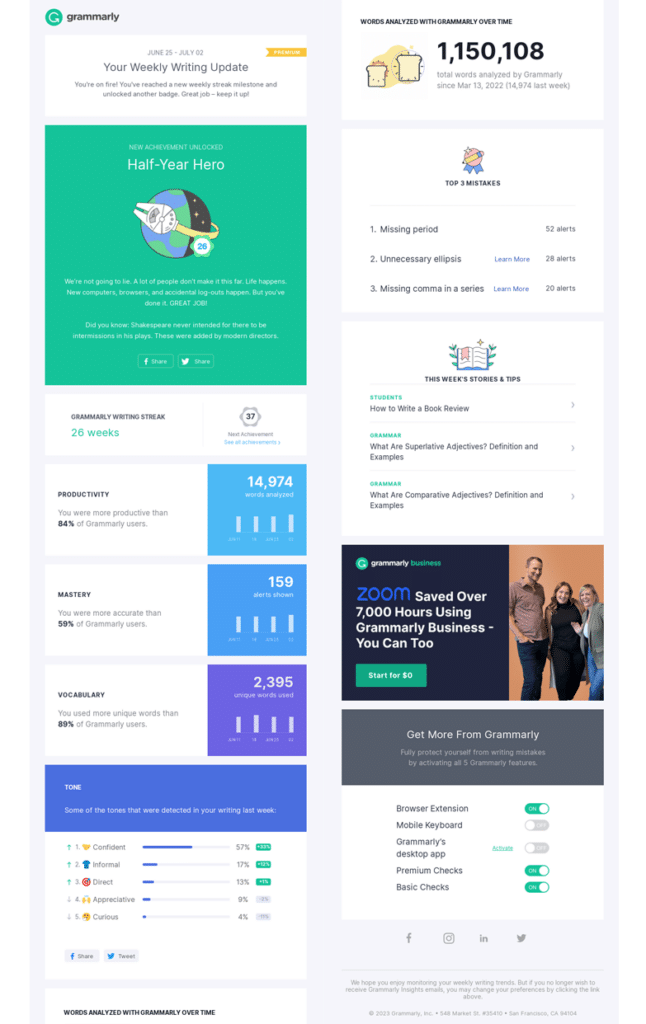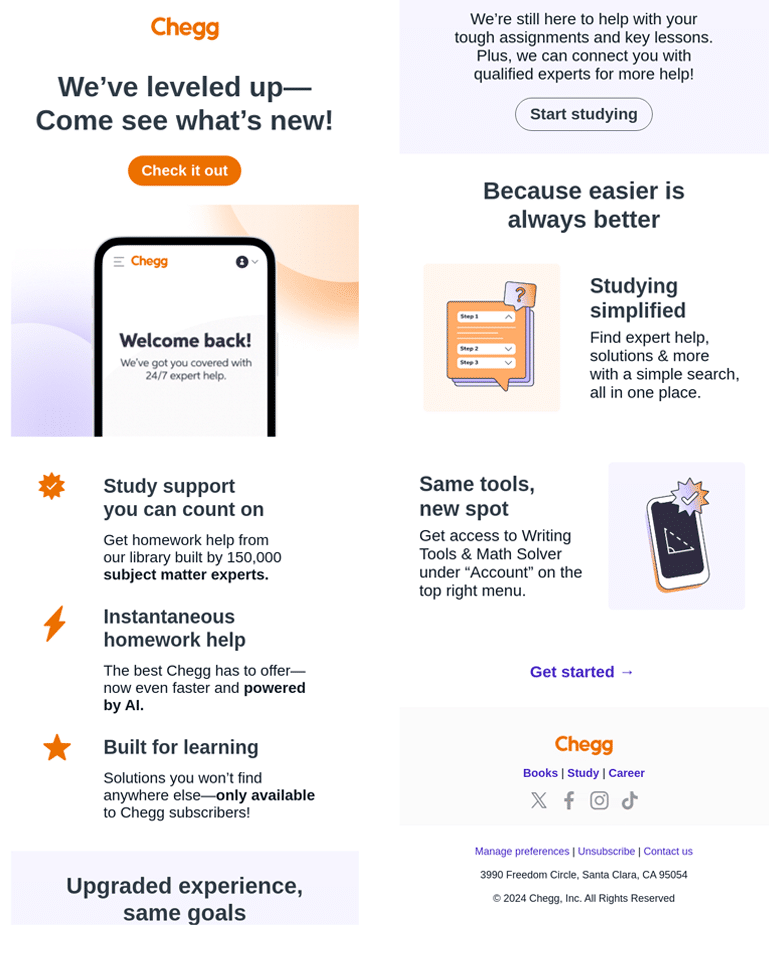How often have you ignored an email in your inbox from stores or services you’ve subscribed to? In a 2021 global survey, more than four in 10 respondents hit unsubscribe from brand emails, and 35% marked emails for deletion by scanning who they are from.
Now, it doesn’t automatically mean that email marketing is dead or that it isn’t effective anymore. In fact, the Return on Investment (ROI) of email marketing is higher than that of other channels. For every dollar you spend on this digital marketing strategy, you can count on an average return of $40.
How is it that effective if emails do get ignored? The problem may lie in the types of email marketing campaigns brands and services implement.
Email marketing aims to promote your business’s products or services, and creating an impactful one is crucial to stay relevant to your customers and avoid that unsubscribe button.
If you’re curious about which types of email marketing campaigns best work, stick around. We’ll deeply discover what an email campaign is and the best types to blast on your next brand promotion.
What is an email campaign?
An email campaign is a series of marketing emails sent to a group of people at once. The goal of an email campaign is to encourage recipients to buy a product or service or learn more about the business.
Marketers and businesses tap on the power of email to grow their brand and drive traffic, with 89% of marketers using email as the primary channel to generate leads. With the proper execution, a good email campaign can keep the audience engaged, ensuring solid and dependable connections.
However, it is crucial to consider that you should not launch email campaigns without prior planning. A successful campaign requires a strategic approach that gives substantial value to your customers.
A well-crafted email marketing campaign must have the following:
- An eye-catching subject line. Your email’s subject line is crucial in creating the first impression. In email marketing, the subject line is the first part of the content you’ll feed the audience. You must capture your reader’s attention through a compelling line, encouraging them to click and keep reading.
- Substantive and straightforward content. Consider your reader’s time and create a short but well-written, concise copy. A simple and easy-to-read message is crucial in keeping your audience enticed.
- A copy that identifies ‘what’s-in-it” for the readers. What will your readers benefit from your product, service, or business? Prioritise recognising and catering to their needs. Show them your value as a brand and how they can leverage your offers into their work or personal lives.
- A personalised and relatable message. A customised message makes the reading experience more meaningful. Ensure that the content you’ll send out is relevant to the recipients by checking on their demographics and other information to help you write with customisation in mind.
- An optimised content for mobile views. Almost 1.7 billion users open and check emails on their phones. Creating a mobile-friendly email campaign is essential to ensure a satisfied user experience, keeping them engaged throughout the reading.
Best Types of Email Marketing Campaigns to Use
By now, you’ve already known the qualities email campaigns should possess to hook the readers into your brand. From eye-catching headlines to mobile view optimisation, you must know what type of email marketing campaigns to execute and apply these principles because they act as your message’s purpose. Here are the best types of email marketing campaigns to use in your next release.
1. Welcome Emails
One of the best types of email marketing campaigns is a welcome email.
When did you last subscribe to a product or service? Did you receive an email from the brand welcoming you and calling you to discover more about their business? This may be a welcome email automatically sent when an individual signs up in your email list.
A welcome email may contain further details on the brand’s products or services, infographics, and resources. Its main goal is to get the audience to explore the brand more. Here’s an example of an iFoundries welcome email:
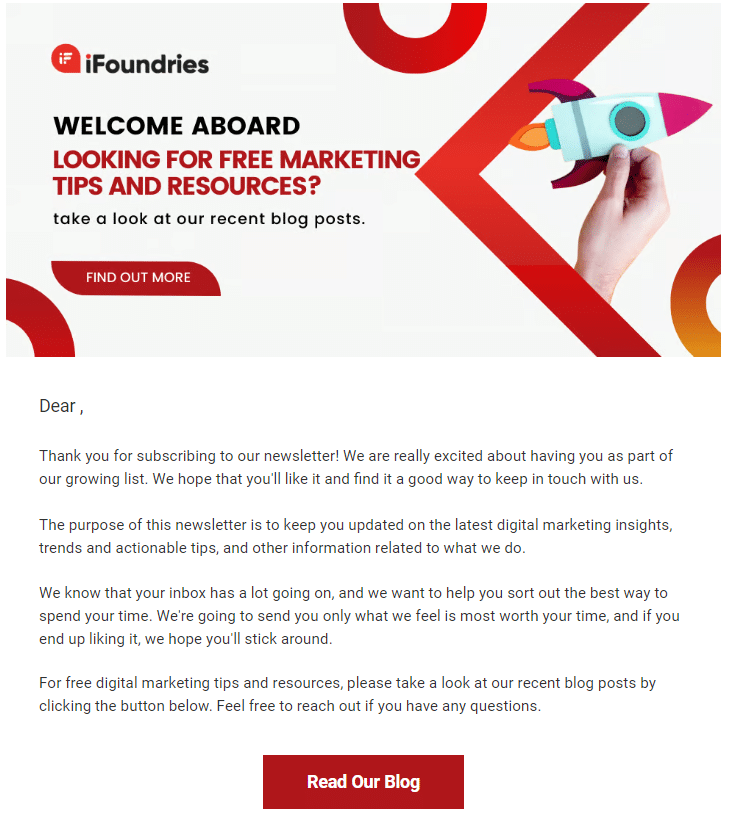
2. Customer Onboarding Campaigns
Customer onboarding campaigns are one of the types of email marketing campaigns you
shouldn’t miss for your brand. This example of email marketing is closely related to welcome emails. Let’s see how.
Customer onboarding emails assist your subscribers to gain insights and learn more about your service or product. However, unlike welcome emails, this type of email marketing campaign is incrementally delivered to recipients. A welcome email is just a start, but sending off a series of onboarding messages is going beyond for your customers in making them feel engaged and nurtured.
Below is an example of one of the several emails in an onboarding series, showing helpful tips on the next steps and other valuable information customers can take advantage of while they revel in your offerings.
3. Confirmation Messages
You may think this one’s unnecessary, but getting your customer’s consent is always the best way to go.
An email confirmation message is one of the types of email that ensures every person on your list truly wants to be there. With this, you’ll have more accurate data for your email marketing metrics, resulting in better strategies to supercharge your conversion rates.
Below is a simple confirmation email:
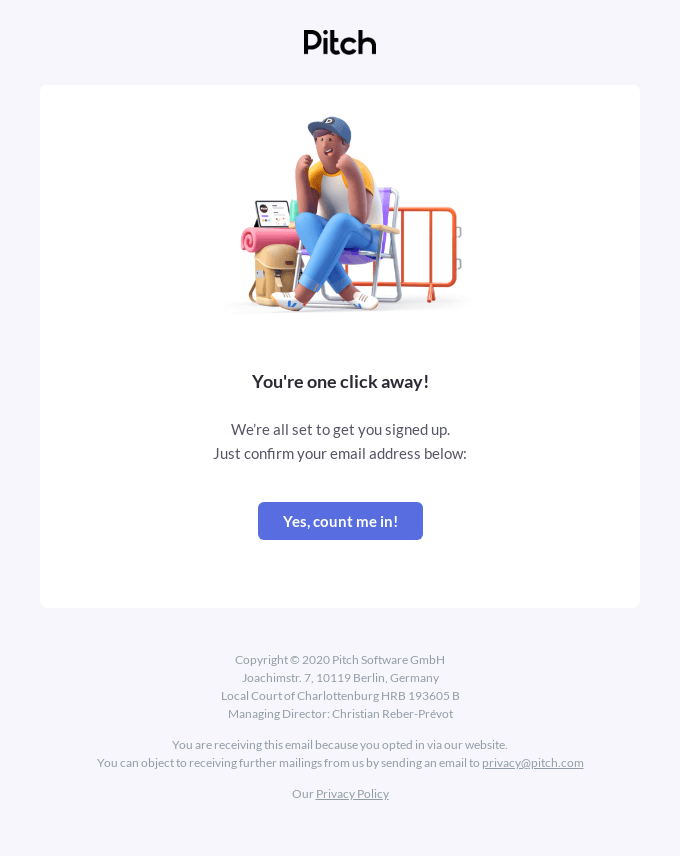
4. Pre-launch, Launch, and Post-launch Campaigns
Want to share a new product or are you excited to share a new promo campaign? Pre-launch, launch, and post-launch campaigns are some types of email marketing campaigns you should consider implementing.
A pre-launch email campaign can generate noise around your promotion or product before its official release in the market. It announces your promotional campaign so that customers can take note and be reminded to join early in the event. It may also highlight urgency by incorporating exclusive offers to your audience.
For example, MISC’s pre-launch campaign mentions that during the first 24 hours of Kickstarter, they’ll be offering the best pricing for the first 250 customers.
Meanwhile, the launch campaign itself declares the beginning period of the campaign, packed with triggers to click the “Try Now” button (see example below) as you eventually increase your sales.
At this point, maybe some of your readers are already aware of your campaign if you’ve sent the pre-launch message, while others may have missed your email. It is crucial to give them a few highlights and more information about your products and where to find them.
Check out Krispy Kreme’s email launch for their Biscoff doughnuts.
After blasting your pre-launch and launch emails, it would be nice to take the opportunity to hear from your customers or make some effort to reflect on your campaign and product performance by reaching out to your audience.
In your post-launch campaign, check with your customers on the recent campaign you have just pushed, and take advantage of their insights to further improve your service or product. Other post-launch efforts could be inviting your customers to join your community, or you can share some advanced tips.
Here’s an example of a brand calling its recipients to share their thoughts.
5. Discounts and Limited Offers
Who doesn’t love sales and discounts, right?
An email message about discounts and limited offers strategy is another type of email marketing campaign that engages responses from the users. Get creative with your message and create immediacy with your content.
Here’s an example of a brand’s email offering discounts.
6. Feedback and Surveys
Reaching out to your customers and getting to know their opinions and needs could really be helpful for your brand. Get their feedback by inviting them to answer a survey about your product or service.
Similar to post-launch surveys, you will extract valuable insights from your customers and leverage this to adjust or improve what you offer. The difference is that this kind of email campaign doesn’t essentially come after post-launches; you can blast them anytime.
7. Holiday-Related Emails
The most wonderful time of the year is the most perfect period to send out fun and exciting emails to keep your audience engaged. Blasting holiday-related emails does not only give you the window to send greetings to your subscribers. But you can drive sales and conversions by keeping them engaged and active by interacting with your brand’s content.
Aside from Christmas, other holidays you can take advantage of are the New Year, Black Friday, Cyber Monday, and more.
Here’s an example of a holiday email marketing campaign by Adobe Stock.
8. Appreciation and Milestone Emails
Milestones and appreciation emails are also some of the best types of email marketing campaigns you can pursue for your brand.
Keep your customers engaged by sharing milestones with them. Milestones are not limited to your brand’s most exciting moments, anniversaries, etc. It can also be about the milestones your customers have achieved while enjoying your service or product.
Here’s an example of an email marketing message sent by Grammarly to its premium subscribers.
The brand has compiled a wrap of their customers’ writing activities for the week, sharing insights on productivity rates, mastery, common writing mistakes, and more. Doing so gives their customers valuable insights and data on which they can improve over time. The brand also appreciates the users’ performance and calls them out for a job well done for the week.
9. Newsletters
A newsletter is one of the most popular types of email marketing campaigns. If your business creates blogs and useful content, sharing them in your email list could drive more website traffic. With newsletters, you can update your list with the latest trends and important information in your niche.
Check out this email sent by iFoundries for our blog about EDM marketing benefits and strategies.
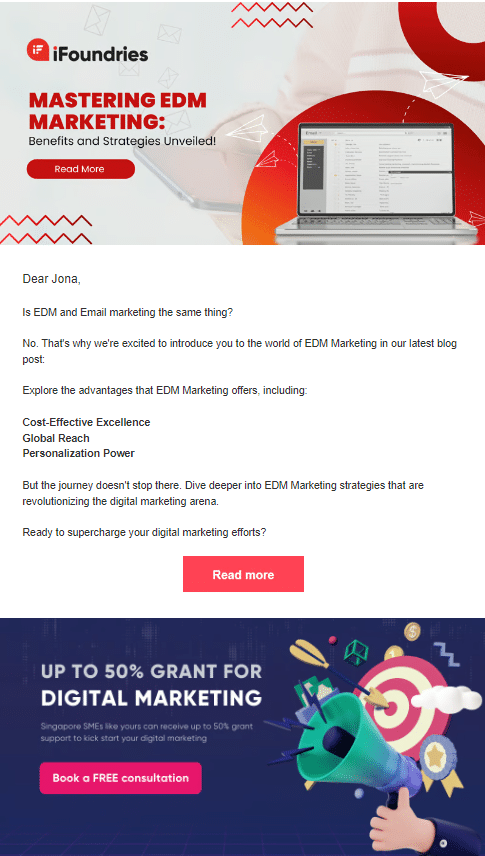
10. New Feature Updates
Let your customers know about anything new on your brand–it is a great way to keep their interest as it leaves them curious about what you can bring to the table.
News feature updates are one of the email types where you can get to be as detailed as possible. Answer frequently asked questions so your subscribers are well-informed on your brand’s upgrade. In this way, you can keep them satisfied with the new information they have for your business.
Conclusion
An email marketing campaign should be launched with a proper strategy. Brands should implement a campaign that sustains the audience’s interest throughout their subscription and not just on their welcome message.
Indeed, blasting one requires simplicity and straightforwardness in terms of content creation. But, a whole email campaign requires a purposeful and deliberate approach to tap into the audience’s interest.
The goal is for them to click and convert, and harnessing the best types of email marketing campaigns is helpful in doing so. An email marketing agency could significantly increase leads, conversions and sales.
iFoundries is a digital marketing agency that specialises in email marketing in Singapore. We help businesses implement email campaigns from strategy and design to launching and analytics. Our team comprises digital marketing experts that can help your business grow.
If you’re looking for email marketing services to boost your email efforts, contact us. We’ve got the perfect team to help!


